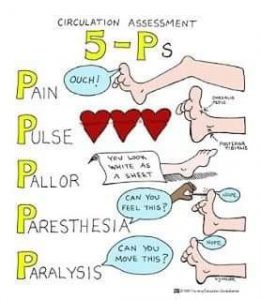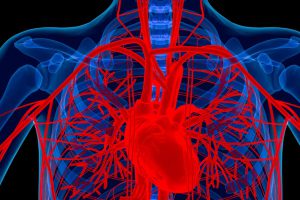A Quick glance on Assessment of Circulation for the First Aider

Think about the 4 P’s
PAIN – Assess for pain using a 0-10 pain scale. Assess for pain with movement if movement will not cause further damage. Determine the location, quality and etiology of the patient’s pain.
PULSE – Compare distal pulses between the injured or affected extremity and the unaffected extremity. Lack of distal pulse may indicate compartment syndrome or arterial compromise.
PALLOR – Observe skin color in the injured or affected extremity and in the skin in general. General pallor may indicate severe loss of blood; pallor and coolness of the injured extremity indicates decreased arterial supply. In contrast, warmth and cyanosis may indicate venous stasis.
PARASTHESIA – Ask about possible tingling or prickling, “pins-and-needles” sensation.




